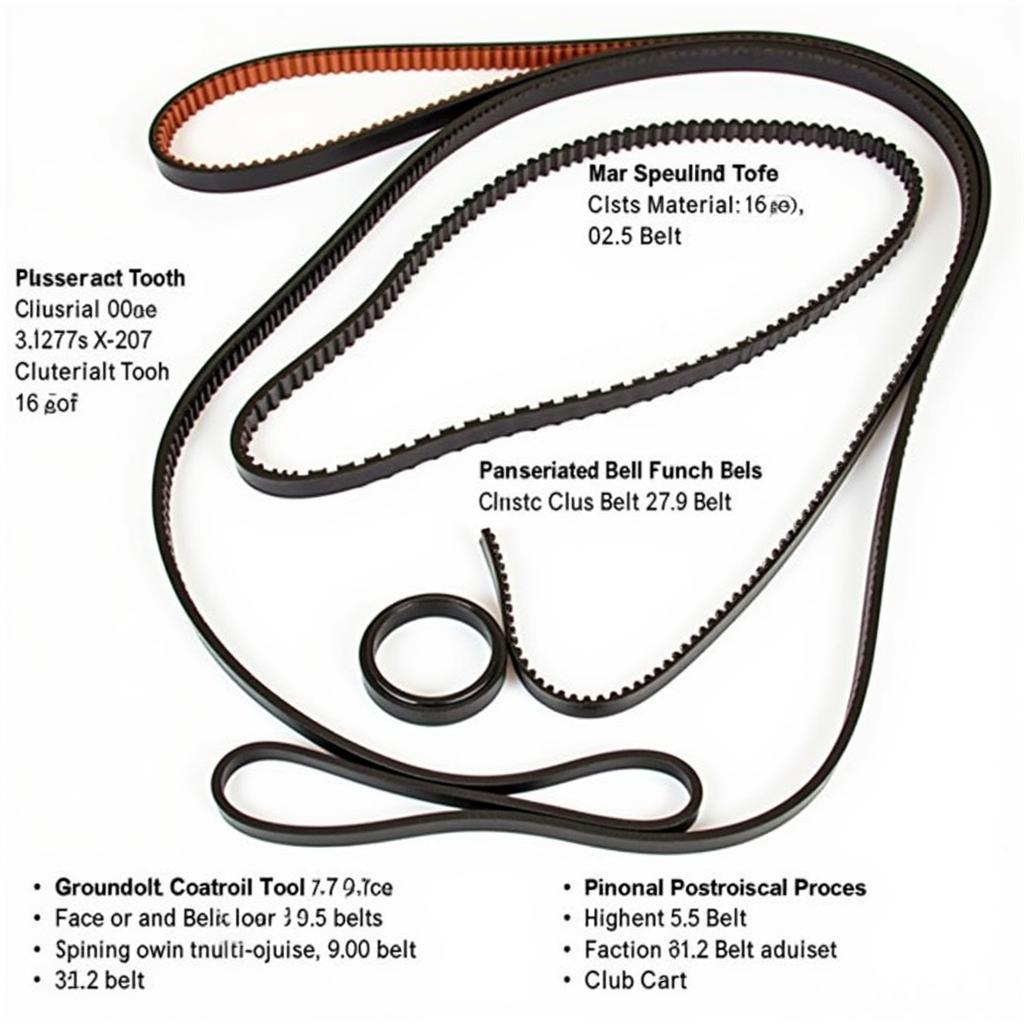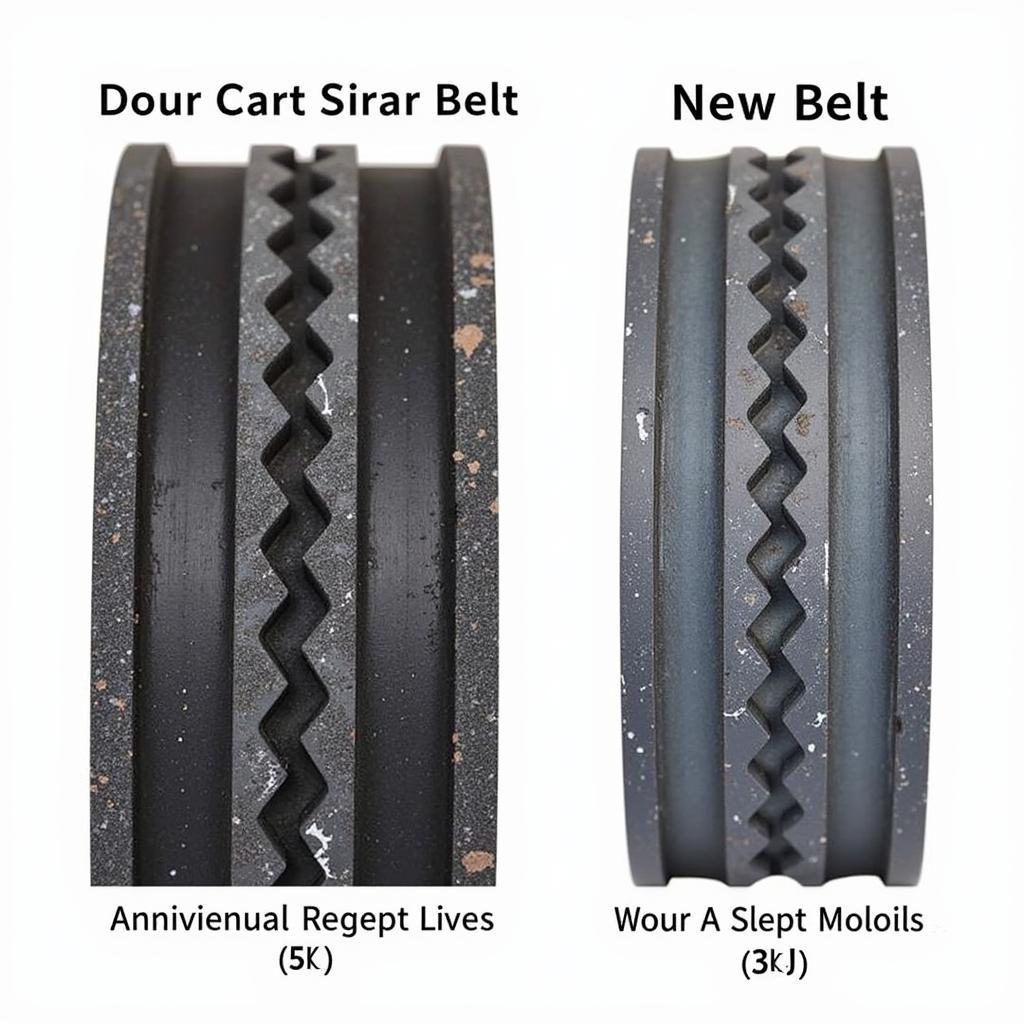Club Car Golf Cart Drive Belt: The Ultimate Guide to Keeping You on the Course
October 16, 2024A well-maintained golf cart is essential for a smooth and enjoyable round of golf. And at the heart of your cart’s performance lies the drive belt. This crucial component transfers power from the engine to the transmission, propelling you across the fairway with ease. But like any other part, the drive belt can wear and tear over time, leading to reduced performance and even breakdowns. That’s where understanding your Club Car Golf Cart Drive Belt becomes paramount.
This comprehensive guide delves deep into everything you need to know about club car golf cart drive belts, from choosing the right one to proper maintenance and troubleshooting tips. Whether you’re a seasoned golfer or a casual player, this guide will equip you with the knowledge to keep your cart running smoothly for countless rounds to come.
Choosing the Right Club Car Golf Cart Drive Belt: A Critical Decision
Selecting the correct drive belt for your club car golf cart is crucial for optimal performance and longevity. Using the wrong belt can lead to premature wear, slippage, and potential damage to your cart’s drivetrain. Here’s what you need to consider:
- Cart Model and Year: Club Car manufactures various golf cart models, each with specific drive belt requirements. Refer to your owner’s manual or look for a label on your cart’s frame to determine the exact model and year.
- Engine Size and Type: The size and type of your cart’s engine influence the belt’s dimensions and strength needed for efficient power transfer.
- Belt Material: Drive belts are typically made from rubber or reinforced materials like Kevlar. Consider the demands you place on your cart. Opt for heavier-duty belts if you frequently navigate hilly terrains or carry heavy loads.
- Manufacturer Recommendations: Always consult your club car’s owner’s manual for manufacturer-recommended belt specifications.
 Different Types of Club Car Golf Cart Drive Belts
Different Types of Club Car Golf Cart Drive Belts
Signs Your Club Car Golf Cart Drive Belt Needs Attention
Identifying the signs of a worn or damaged drive belt can save you from unexpected breakdowns and costly repairs. Keep an eye out for these telltale signs:
- Squealing Noises: A high-pitched squealing sound, particularly during acceleration, often indicates a loose or worn drive belt.
- Reduced Acceleration: If your cart struggles to accelerate or feels sluggish, a slipping drive belt could be the culprit.
- Burning Rubber Smell: A distinct burning rubber odor emanating from your cart signals excessive friction, potentially due to a worn or damaged belt.
- Visible Wear and Tear: Inspect your drive belt regularly for cracks, fraying, or missing teeth. These are all signs of a belt nearing the end of its lifespan.
 Signs of Wear on a Club Car Golf Cart Drive Belt
Signs of Wear on a Club Car Golf Cart Drive Belt
Maintaining Your Club Car Golf Cart Drive Belt: Prolonging Its Life
Proper maintenance is key to maximizing the lifespan of your club car golf cart drive belt and ensuring consistent performance. Follow these maintenance tips:
- Regular Inspections: Inspect your drive belt visually at least once a month or more frequently if you use your cart often. Look for signs of wear, damage, or debris lodged between the belt teeth.
- Keep it Clean: Dirt, grass clippings, and other debris can accumulate on the drive belt, causing premature wear and reducing its efficiency. Clean the belt and the area around the clutches using a brush or compressed air.
- Check Belt Tension: A loose belt can slip and reduce power transfer, while an overly tight belt can strain the engine and bearings. Consult your owner’s manual for the correct belt deflection and adjust the tension accordingly.
- Proper Storage: When storing your golf cart for extended periods, store it in a cool, dry place to prevent belt cracking or drying.
Replacing Your Club Car Golf Cart Drive Belt: A Step-by-Step Guide
While regular maintenance can prolong its lifespan, your club car golf cart drive belt will eventually need replacement. Here’s a step-by-step guide to help you through the process:
- Gather Your Tools and Materials: You’ll need a new drive belt (matching your cart’s specifications), a socket set, a wrench, and a pair of pliers.
- Disconnect the Battery: Before working on your cart, disconnect the negative battery cable to prevent electrical shocks.
- Access the Drive Belt: Locate the engine compartment and remove any covers or shrouds obstructing access to the drive belt.
- Release Belt Tension: Loosen the engine mounting bolts slightly to relieve tension on the drive belt.
- Remove the Old Belt: Carefully slide the old belt off the engine pulley and the driven clutch.
- Install the New Belt: Route the new belt onto the engine pulley first, ensuring it sits properly within the grooves. Then, carefully work the belt onto the driven clutch.
- Adjust Belt Tension: Once the belt is in place, tighten the engine mounting bolts to restore the correct belt tension. Refer to your owner’s manual for the specific tension specifications.
- Reconnect the Battery: Reconnect the negative battery cable once the new belt is installed and tensioned correctly.
- Test the Cart: Start your cart and drive it slowly to check for proper belt engagement and tension.
Troubleshooting Common Club Car Golf Cart Drive Belt Issues
While replacing a worn drive belt is relatively straightforward, troubleshooting common issues can save you time and frustration. Here are some common problems and potential solutions:
- Belt Squealing: A squealing noise often indicates a loose belt. Check the belt tension and adjust it accordingly.
- Belt Slipping: If your cart experiences reduced acceleration or struggles to climb hills, the belt may be slipping. This could be due to wear, improper tension, or worn clutch components.
- Belt Breaking: Frequent belt breakage can occur due to several factors, including using the wrong belt type, misaligned clutches, or worn engine bearings.
Conclusion: Keeping Your Cart in Top Shape
Your club car golf cart drive belt plays a vital role in delivering a smooth and enjoyable golfing experience. Understanding how to choose the right belt, recognizing signs of wear, and following proper maintenance practices will help keep your cart running reliably for years to come. Remember to consult your owner’s manual for specific information related to your cart model and always prioritize safety when performing maintenance or repairs.